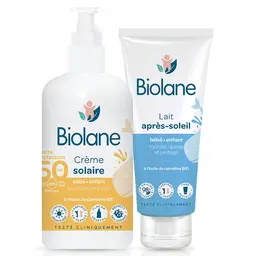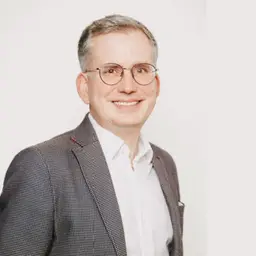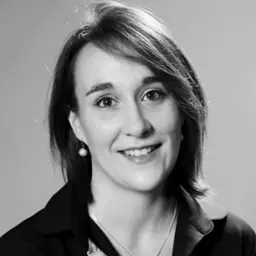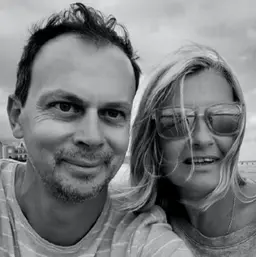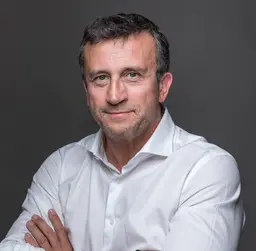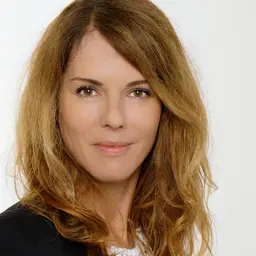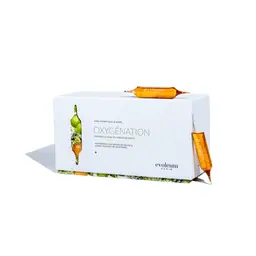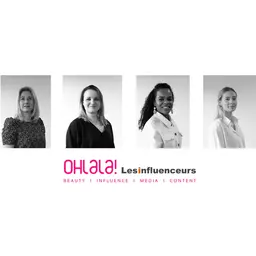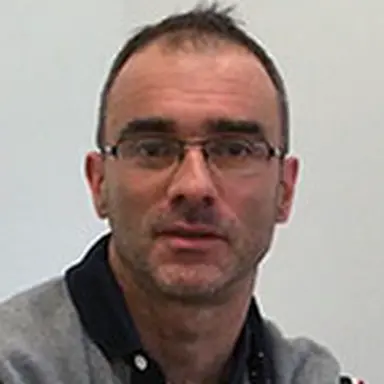
Christophe Rousselle is in the middle of his third mandate at the SCCS. CosmeticOBS met him. He dreamt of being a vet, he is a toxicologist. He published a thesis on how drugs can pass through the blood-brain barrier, and now he calls the shots in the field of cosmetic ingredients.
The Opinions Christophe Rousselle drafts with his expert colleagues of the SCCS (Scientific Committee on Consumer Safety) after assessing the safety of cosmetic ingredients are eagerly awaited, but often feared by the industry. And yet, this man is anything but big-headed. He received us very simply, in a small impersonal meeting room at ANSES (French National Agency for Food, Environmental and Occupational Health & Safety), where he now manages the chemicals risk assessment division. The SCCS? ‘From the outside, it feels it must be something! But when you are actually in Luxembourg, the image changes… there is nothing extraordinary about it!’ he assures. Still, we are curious to learn how it all works inside… And he told us about it without any fuss.
From having a dog put down to cosmetics safety
Christophe Rousselle is a discreet man. If he proves very forthcoming about skin penetration, aggregate exposure, or occupational safety issues, he is actually more reserved when it comes to talking about himself.
And yet, we know he is 44, and if he ended up being a toxicologist and not a vet, it is because he quickly realized the profession’s realities would not suit him: ‘When you are at the vet school, everything is fine, you can provide health care without paying attention to the costs. But, when you open your own surgery, you must quickly choose between treating a dog with cancer for 1,000 euros or put him down. More than treating animals, being a vet is talking psychology with their owners,’ he explains. ‘Besides, in scientific terms, there are no exchanges…’
This is what may seem the most unacceptable to him: today, he says he really likes the contradictory discussions and debates on toxicological issues, the investigations to be done, searching for publications to build up coherent arguments, exchanging with other experts, demonstrating a point of view… No, he is not interested in spending his time alone behind a computer either!
Afssaps? I applied, and that is how it all started…
So, two years after his PhD, he joined Afssaps (now ANSM, the French National Agency of Medicines and Health Products Safety). ‘It was all a combination of circumstances,’ he explains. ‘I had had quite a lot of classes on cosmetics as part of my university degree, and also a few contacts during my thesis with people in cosmetology. I found the job they did quite interesting. So, when I saw that ad to work on cosmetic ingredients, I thought, why not? I applied, and that is how it all started. Initially, I knew nothing about it.’
That is when he got his first contact with the SCCS: ‘The cosmetics division at Afssaps had just been created: there were only three people, and no toxicologist to form the group dedicated to ingredients as a mirror to that of the SCCS. At the time, my job consisted in reading the Opinions of the European Committee, dissect them, discuss them with experts, and have them reviewed by the Cosmetology Commission to send the remarks of the French Agency to the Secretariat of the DG SanCo.’ He worked on glycol ethers, phenoxyethanol, formaldehyde, aluminium…
‘We would prepare our files by following the SCCS Notes of Guidance. Then, we would send them, receive feedback, and sometimes criticize the comments we got… At that time, I was on the other side! I had the SCCS point of view, but from the outside.’
AFSSET? It just happened…
However, Christophe Rousselle is not the type to get stuck in a routine, as motivating as it may be. Three years later, he left Afssaps. ‘What I was really interested in was toxicology and drugs (there is more in terms of drugs toxicology, it is more advanced). Cosmetics toxicology is mostly about irritations and allergies. I cannot say I got bored with glycol ethers or formaldehyde, but after a while, I felt like widening my horizons. I was approached to work for AFSSET (French Agency for Environmental and Occupational Health Safety) when the Agency got started. I had a job interview, and it just happened. I moved on to something else, the environment, and what I found quite surprising was that it was almost the same issues I dealt with: even today, at ANSES, we work on formaldehyde, parabens, titanium dioxide, D5, D4… Half the substances reviewed by the SCCS are also assessed here, although it is from the angle of professional risk, classification, or REACH, so there is a real coherence when you work in toxicology. From the outside, it may all seem quite disconnected, but at the end of the day, the daily work is similar.’
After it merged with AFSSA (French Food Safety Agency), AFSSET became ANSES. Christophe Rousselle is still there, but… not always. Part of his time has been dedicated to his job as a European expert for seven years.
The SCCS? I was not really confident, but I was hired…
‘Even when I left Afssaps,’ he explains, ‘I was still interested in cosmetics. It is a fascinating field, and when I joined AFSSET, where we worked on chemicals and their environmental impact, I thought it was a shame to lose this expertise. So, when there was this call for applications from the SCCS, AFSSET, which had just been created, aimed to be recognized on the European level, and we were encouraged to apply. That is what I did, when the SCCS was renewed: I thought it would be funny to find myself on the other side. I was not really confident, I thought I would not be hired: to me it was obviously extremely hard… But I was hired, and then my mandate was renewed… and I am still here today.’
Pure chance, accidental combination of circumstances… Christophe Rousselle almost explains his career path to the highest cosmetics safety authorities with the intervention of good fairies. But, what we learnt right after just shows his skills and expertise must have played a significant role…
A life of Opinions
So, here he was, in the holy of holies, discovering the Committee’s intimate life: plenary sessions about three times a year, reports prepared upstream by the working groups… For his first mandate, he joined the Hair Colourant Group: ‘I chose this group first because it is well-structured and quite easy. There was a lot of work to do at that time (NB: the European Commission had launched a global strategy for the safety assessment of hair colouring substances). It was not exactly thrilling, because as far as toxicity is concerned, it does not go really far’…
However, he also took part in ad hoc groups, for example on how to improve risk assessment methods, he chaired the group on the products that imitate foodstuffs…
For his second mandate, he also joined the Ingredient Group: ‘I thought I was done with colourants, and the issues related to preservatives or filters were very attractive….’
For his third mandate, he added a participation in the Nano group… and the Methodology Group: ‘All experts are in this group by default, because at some point, everyone needs to get involved in the methodology. So, now, I take part in all groups whenever I can,’ he says simply.
First step: cases submitted to the Committee
The SCCS may deal with a case on its own initiative when the experts feel concerned about a specific issue, and draft a Memorandum, for example. But all their Opinions are published at the European Commission’s request (the mandates sent to the Committee are published on the Commission’s website). The industry submits its safety files, and things get started.
Then, it is group work
In practical terms, an Opinion is composed of several parts (physical chemistry, sensitization, local tolerance, general toxicity, reprotoxicity, risk assessment, etc.). If all experts are supposed to read the whole file, usually, each of them mainly deals with one particular part, depending on their specialization (dermatologist-allergist, chemist, toxicologist…). Then, the debate is launched between the Opinion’s reporter and the other members of the SCCS.
‘We review the text, page by page, and the reporter and those that have read specific parts present their main conclusions. If other members do not agree, they make comments, we talk about it, and it becomes a real discussion, which goes on as we go through the Opinion. We often spend quite a lot of time on the wording of the SCCS Comments: when we report a study, it is quite factual, but it is when we comment it to indicate whether the SCCS agrees or not that we have longer exchanges,’ Christophe Rousselle reveals.
… and its moral dilemmas…
‘What is always complicated,’ he continues, ‘is that we are often torn between, on the one hand, the desire to ask for more elements or studies, for example when, in the physico-chemical part, we do not have all the impurities or concentrations available, and the expert chemist says he would like to have a chromatogram or a mass spectrometry analysis, and the other experts agree, and, on the other hand, the need to close the file and determine whether the missing element is really blocking, meaning if the lack of information eliminates any possibility to authorize the substance. For all files, we expect a framework, with such or such element, and when something is missing, and if there are really too many gaps, we ask for additional data. When it is just minor things, most often, the experts search in the literature themselves, or they go on ECHA’s website… Now, when too much is missing and the file is really not well-structured, after a while, even if there may not be any safety problem, we just cannot get a clear idea of what is in the product, what the substance is, whether the tests were really performed… if we have too many questions, we send the file back.’
… never cut from topical issues…
‘The issues we have been discussing more and more have to do with genotoxicity, when we only receive in vitro test results, when we have a doubt and need an in vivo study. But we know these tests have been banned… One solution would be to deem the substance not safe, but if it is a preservative, we feel it is a shame, because there are not too many of them… So, we try to make do with the in vitro results, by searching for other information… And we are like, if we do not accept it at all, is that OK? Or: In which product category could we at least authorize it? We do our best to be measured. For ingredients like UV filters or preservatives, for which there is a real public health issue at stake, we would prefer to authorize them, but if basic data are not available for such important ingredients, it is a real nuisance.’
… and in collaboration with the industry
‘In the past, when important data were missing in the files, we would publish a negative Opinion, and the industry would come back to us two years later with a new file. What we do now, and it is actually the Commission that encourages us to do so, which is a good thing, is that we have exchanges upstream, sometimes even during the session.’
Then comes validation
Once reviewed and drafted, the Opinion ends up being read at a plenary session, with six or seven others suggested for validation. In most cases, it is adopted without any further discussion: ‘Discussions are only exceptional, for example if experts who were not members of the working group have a question, disagree, or raise a particular issue,’ Christophe Rousselle explains.
What if there is a serious conflict? ‘We do not vote much often… I remember that vote on parabens for children, but most often, the Opinions are adopted unanimously. Besides, if someone is not really convinced, we talk. If the Opinion’s reporter really cannot seem to convince them on a particular point, it all goes back to being discussed by the group. And as long as there is no consensus, the Opinion is not adopted. It is different at ANSES, where there is a ‘minority Opinion’ column, and where, after the committee’s experts have given their opinion, a different voice may express itself. This box is almost never filled in the SCCS Opinions. It is true that there are discussions sometimes, but generally speaking, after a while, we find a compromise with a wording that suits everyone.’
Then comes contradiction
Once adopted, the Opinion is not definitive yet: as soon as it has been published, it is subject to a period open to comments for at least four weeks (eight, in most cases). There may be more or less comments, and they can come from anywhere…
‘Usually, comments come from the people who defend the substance, both federations and manufacturers, but also from Member States or their health safety Agencies. Then, there are people who comment as individuals, like renowned experts or former distinguished members of other European committees,’ Christophe Rousselle comments.
But making a remark also means criticizing the experts’ work…
‘Of course, the comments we receive are not always pleasant,’ he admits, ‘but what is good is that we always get the pros and cons. It is only fair. Sometimes, it helps make progress, other times it has nothing to do with what we do, and it is more about risk management: do you not realize it will have such or such consequences? But that is when you realize how large the public is, because comments come from all around the world. Every time an SCCS Opinion is posted online, it is fair to say it is eagerly awaited! But it is also what makes our job so interesting.’
And it is the only pressure Christophe Rousselle feels. He claims he has never felt any other before…
Ultimately, another life starts
Once the final Opinion published, after taking into account the comments received, it is no longer in the hands of the SCCS… whatever happens. ‘During my first mandate,’ Christophe Rousselle explains more cautiously, ‘Ian White, who was then President of the SCCS and a dermatologist-allergist clinician, was quite concerned about allergens. We had released an Opinion aimed at providing a stricter framework, and as the Commission was taking a lot of time to implement it, the SCCS issued a reminder at the beginning of every meeting, asking how things were going, and why the SCCS Opinion had not been transposed into regulations yet, emphasizing the fact that it was a real public health issue… But once we have published an Opinion, we are not supposed to take action.’
So… happy at the SCCS?
In terms of physical presence, Christophe Rousselle is in Luxembourg one or two days a month. But he also has ‘homework’ to do… or he works in the train if, for a meeting starting at 9am, he received another document at 2am or 3am the previous night.
Time
His responsibility is no picnic: ‘The first thing I must do is read everything, and then, when you are a reporter (we take turns, usually we are all reporters in a particular group, and over a whole year, we can be the reporter for one or two Opinions), you must draft the text, and it requires more commitment. I was the reporter for D5, vitamin A, and aluminium during my previous mandate… these were huge files, they took me a lot of time. And when you are the only one to receive 200 pages of comments and you need to draft the first answer, it is a little burdensome.’
On top of that, there are not many employees to support the SCCS, even less than there used to be…
Not much money
It should be said that all this is not that highly paid: ‘our wage level is nothing like that of the industry’s experts! It is better not to be motivated by money. The main interest I have in it is intellectual,’ he adds.
A few frustrations
If it is fair for him to have the sense of a job well done, Christophe Rousselle makes no secret of the fact that it is not always perfect: ‘What I find unsettling today, is that the human health aspect for consumers is assessed by the SCCS, the environmental aspect is assessed under REACH, but all the ingredients dealt with by the SCCS are not systematically evaluated according to environmental criteria (as a matter of fact, in our Opinions, we often specify that we have not taken into account the environmental impact). For example, for D5, I did not understand why we spent so much time working on human health risks, when it was already restricted by ECHA’s decision to 0.5% maximum for the environment.’
‘The same goes for professional risk. Today, the SCCS does not take into account the risk assessment for the professionals who handle cosmetics: hairdressers, beauticians… There is never any scenario for them, whereas those who handle hair colourants the most are actually hairdressers. Our job is to assess the risk for consumers who apply the product once a month, but never for professionals who handle them every day.’
Why is that so? ‘We are told that it is not the responsibility of the SCCS, but of the SCOEL (Scientific Committee on Occupational Exposure Limit Values). However, they study substances and set limit values not to be exceeded, which are then included in European regulations. They do deal with professional risks, but I do not think they assess them.’
In addition, he pleads for more coordination between the committees and more systematic exchanges of information: ‘There is now much more effort between ECHA, the SCCS, EFSA… The experts from a committee are invited to the meetings of others, there are exchanges between the secretariats, for example when data in REACH files are not available to us, we may ask to have a look at them… So, things are getting better, but it is not part of the culture yet.’
Unshakeable motivation
Christophe Rousselle has not lost his faith. There is no doubt he likes what he does: ‘Thanks to the SCCS, I can discover how it works elsewhere and exchange with experts in other fields. Besides, I like the demonstration process, having all the elements needed to analyze, build up arguments, and try and be as fair as possible. It is like an investigation, we go search for publications, we check whether anyone contradicts them, and we focus on things that may seem odd or incoherent.’
Still, he is already thinking about when, once again, he will go find new challenges elsewhere: ‘It is my third mandate, I have another five years ahead of me. But now I am sure it is the last one. It is really time-consuming, and maybe it is the right moment to move on. I think I will regret my job here, because there is a pleasant atmosphere. We are not in a large conference room with mics, it is still organized on a human scale, we are face to face around a large table, we can see each other, we have our files open and we question each other. I love these meetings, I never get bored… We are really aware of the importance and impact of our jobs, but that is what is motivating. One day, I guess I will stop working on cosmetics, but for now, I like it.’
Well, there is no doubt about it when you hear him talk like that!



